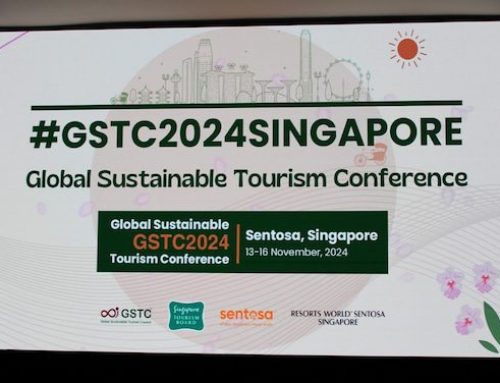South America Takes Center Stage, Other Destinations to be Announced Soon
WASHINGTON, D.C. (March 26, 2013) – The Global Sustainable Tourism Council (GSTC) has selected the Cusco-Sacred Valley-Machu Picchu corridor in Peru, and the shores of Lake Llanquihue, Puerto Varas, and Frutillar in the Lakes Region of Chile for the second round of its pilot program to test its new Criteria and Indicators for Destinations. These new Early Adopters are the first South American destinations to participate.
Overseen by GSTC’s Destination Working Group and managed by NGO partner Sustainable Travel International, the Global Sustainable Tourism Council’s Criteria for Destinations are designed to orient destination managers, communities, and businesses toward the steps that are needed to sustain their natural and cultural assets, while benefitting local communities. The Destination Criteria complement the existing GSTC Criteria for Hotels and Tour Operators, which have become the worldwide sustainability standard for tourism businesses.
Joined by a select group of additional destinations to be announced, destination management organizations in Peru and Chile will help to test and provide feedback on the Destination Criteria. Early adoption of baseline sustainable tourism criteria and indicators will also offer these destinations improved decision-making frameworks, providing an increased ability to evaluate progress in the sustainable development of tourism.
"Peru is participating in the GSTC Early Adopter Program as part of our strategy to consolidate a network of sustainable tourism destinations," Claudia Cornejo Mohme, Peru's Vice-Minister of Tourism said. "We are delighted to support the Destination of Cusco, Sacred Valley and Machu Picchu as our first destination to measure progress toward sustainability. We see this as an important step to enhance the competitiveness of our world-class destinations. We plan to replicate this model in other destinations in the country," she said.
“We are pleased to welcome Peru and Chile to the Early Adopter Program,” said GSTC Board Chairperson Kelly S. Bricker, Ph.D. “These two iconic South American destinations are demonstrating true global leadership. We are confident that this second and final round of our pilot program will help us continue to incorporate diverse perspectives and improve the Criteria and Indicators for Destinationsfor world-wide application through a transparent, collaborative process. “
Sustainable Travel International’s team will visit each of the Early Adopter destinations to meet and consult with key stakeholders, including destination management organizations, the tourism private sector, NGOs, community leaders, and other government agencies.
Peru and Chile were chosen for their positive impact on the environment, their economic and social benefits to communities, and their education of visitors and residents, among other criteria.
High-altitude Cusco receives roughly 80% of visitors to Peru, and the area includes the city of Cusco, the Sacred Valley and the world-renowned Machu Picchu, a UNESCO Heritage Site and one of the Wonders of the World. Cultural heritage is a defining characteristic of the region, which features a collection of Inca ruins and archaeological sites. Cusco was the capital of the Inca Empire and is one of the oldest continually inhabited cities in the world.
Located in south central Chile, the central Lakes Region notably features Lago Llanquihue, the second largest lake in Chile, and the lake resort towns of Frutillar and Puerto Varas. Tourism is economically vital to the region, where visitors partake in outdoor recreation like skiing and hot springs. Tourism is growing steadily across Chile, and the destination has recently initiated a local sustainable tourism committee tasked with ensuring that development happens with preservation of local culture, environment and community needs in mind.
Additional Early Adopter destinations will be announced in the coming weeks. Once feedback has been collected and synthesized, the GSTC will develop and distribute a final version of the Criteria and Indicators for Destinations.
About the GSTC
The Global Sustainable Tourism Council (GSTC – http://new.gstcouncil.org/) is a global initiative dedicated to promoting sustainable tourism efforts around the world. Housed within the United Nations World Tourism Organization (UNWTO), the GSTC works to expand understanding of and access to sustainable tourism practices; helps identify and generate markets for sustainable tourism; and educates about and advocates for a set of universal principles, as defined by the Global Sustainable Tourism Criteria. The Criteria, a set of voluntary principles that provide a framework for the sustainability of tourism businesses across the globe, is the cornerstone of our initiative. For more information, visit www.gstcouncil.org.
About the GSTC Destination Criteria
A panel of business owners, academics, government officials, and other experts, who examined the UN World Tourism Organization’s Indicators of Sustainable Development and other such guidelines currently in existence, developed the GSTC’s Destination Criteria. Because the criteria are intended to describe a globally applicable set of minimum steps needed to approach sustainability, the criteria are seen as a baseline that each destination should add to or adjust as needed.
The GSTC does not aim to certify destinations as sustainable; rather, the Council will review existing certification standards and acknowledge those that meet their criteria. However, any destination will be able to use the new criteria as a guide to becoming environmentally, culturally, and socially sustainable.
About Sustainable Travel International
Sustainable Travel International is a non-profit organization with a purpose. We’ve been collaborating with destinations, businesses and travelers to implement innovative sustainable tourism development and conservation solutions since 2002. We combine the mission and transparency of a non-profit NGO with the business acumen and expertise of the private sector, ensuring our partners achieve their desired results and receive a strong return on investment.




